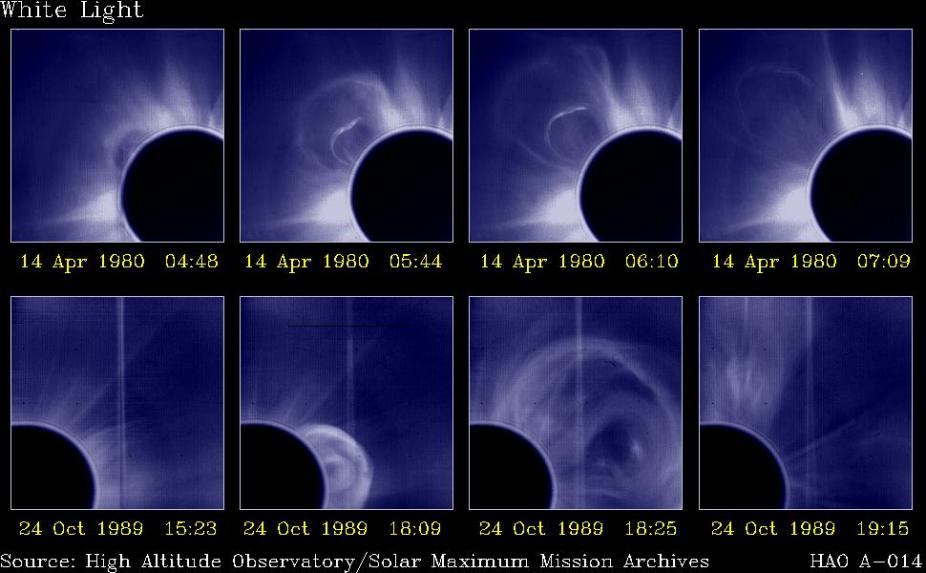Two More Coronal Mass Ejections
Two more coronal mass ejections observed with the coronagraph on board the Solar Maximum Mission satellite.

April 14, 1980 and Oct 24, 1989: White Light images.
Coronal mass ejections occur at all latitudes, suggesting that they are not directly related to intense localized heating events such as flares, as the latter are restricted to low latitude active regions. In fact few coronal mass ejections are observed to be preceded by large flares or intense activity. Observations also show that the expanding coronal material can be still accelerating a few solar radii away from the Sun, and often moving at velocities in excess of the gravitational escape speed, suggesting that the acceleration process is primarily magnetic in origin. The triggering of a coronal mass ejections is currently believed to be caused by a loss of large-scale magnetostatic equilibrium. The 24 October 1989 coronal mass ejection shown on the lower sequence of images is one of the most powerful recorded by the Solar Maximum Mission Coronagraph; approximately 2 x 1013 kg of material were ejected with peak velocities of nearly 2000 km s-1, blowing a hole nearly 100 degrees wide through the solar corona.
Written By P. Charbonneau and O.R. White–April 18, 1995